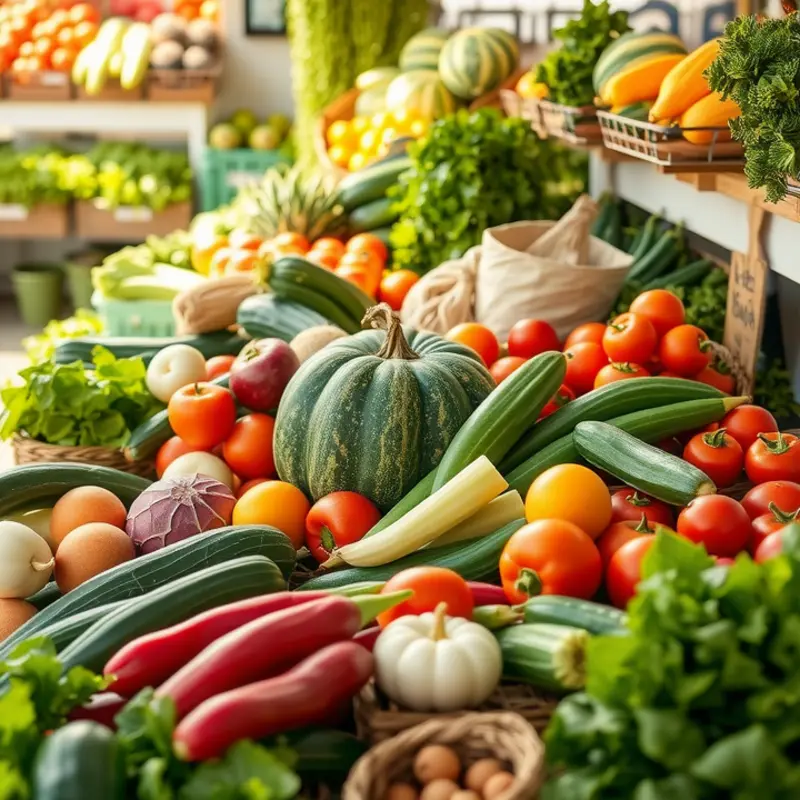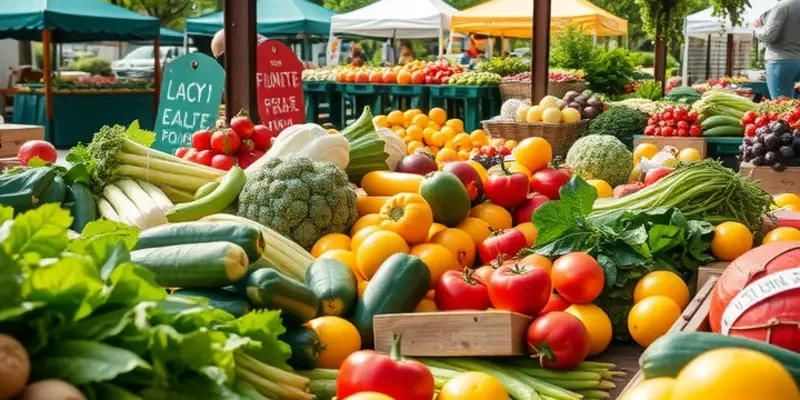Embracing eco-aware cooking strategies can make a significant difference in promoting sustainability. By focusing on mindful ingredient selection, waste reduction, and energy efficiency, you can create nutritious meals that contribute to a healthier planet. This approach is not just for experienced chefs; anyone can adapt their cooking practices to be more environmentally friendly. Let’s explore practical solutions that align your culinary habits with your eco-conscious values.
Mindful Ingredient Selection: Sourcing Sustainably

Choosing ingredients for your meals not only impacts your dish but also the environment. Prioritizing sustainable, local, and seasonal foods forms the basis of eco-aware cooking. A foundational strategy is sourcing ingredients from local farmers who utilize organic practices. These methods contribute to soil health, water conservation, and biodiversity. Organic farming also minimizes the use of synthetic fertilizers and pesticides, promoting ecological balance.
When you choose foods that are in season, you reduce the need for transportation, lowering your carbon footprint. Seasonal foods are likely fresher and packed with nutrients due to shorter supply chains. Visit local farmers’ markets, where you can directly support growers and often find organic options. Engaging with local agriculture innovations provides insight into the farming practices and strengthens community bonds.
Emphasizing plant-based foods is another key approach. Plant-based diets generally have a smaller environmental impact compared to animal-based ones. Pulses, grains, fruits, and vegetables require fewer resources and generate lower greenhouse gas emissions. Incorporate more of these ingredients while ensuring diversity in your selections. Nutritious options like legumes, as detailed in this blog on achieving perfectly cooked legumes, can enhance your meals both in flavor and nutritional value.
Minimizing waste is another aspect of sustainable ingredient selection. Plan your purchases by creating a list of seasonal produce and buy only what you need. This practice cuts down on food waste and aligns with eco-friendly goals. Additionally, consider the origin of packaged goods. Opt for products with eco-friendly labels, which indicate sustainable practices in production.
Supporting local economies is equally vital. When you buy from nearby sources, you contribute to local financial health and sustainability. Locally purchased goods require less transportation, therefore less fuel consumption and CO2 emissions.
Furthermore, variety in your ingredients encourages biodiversity. By rotating crops, farmers can avoid soil depletion and reduce pests naturally, decreasing reliance on chemical interventions. You can play a part by diversifying your dietary choices, promoting diverse crop cultivation.
In conclusion, mindful ingredient selection requires us to consider the origin, production practices, and environmental effects of our foods. A thoughtful approach to sourcing ensures that your culinary practice is both delicious and conscious of its ecological footprint. This chapter, along with the article, aims to empower you with knowledge and strategies for a more sustainable food experience.
Waste Not, Want Not: Creative Meal Planning and Preservation

Effective meal planning begins with understanding the contents of your pantry and refrigerator. Take stock of your existing ingredients before crafting a meal plan. This approach ensures that you utilize what you have, minimizing both waste and costs.
Creative Recipes for Leftovers
Turn leftover vegetables into a hearty quiche or a nourishing soup. Leftover grains, such as rice or quinoa, transform into delicious stir-fries or salads. For stale bread, consider whipping up a batch of bread pudding or croutons that add a delightful crunch to salads.
Strategies for Food Preservation
Embracing food preservation methods like fermentation and canning can extend the shelf life of fresh produce. Fermentation not only preserves food but also enhances its nutritional value. Try fermenting vegetables like cabbage to make sauerkraut, or cucumbers for tangy pickles. Canning is another excellent method for keeping fruits and vegetables usable for months. Learn safe canning techniques to avoid spoilage and maximize flavor.
Furthermore, freezing can be employed to preserve seasonal produce. Blanch and freeze vegetables such as spinach and green beans. Use ice cube trays to freeze herbs in olive oil, creating convenient flavor boosters ready to drop into a hot pan.
Mindful Ingredient Use
For a deep dive into pairing commonly found ingredients in your pantry with minimal waste, consult this detailed guide. Streamlining your ingredient use standardizes your inventory, thus simplifying meal prep and reducing the need for frequent grocery runs.
Best Practices for Preservation
Adopt old-world storage practices, like the use of root cellars or cool, dark pantries for specific vegetables and fruits. These methods slow down deterioration, saving you money and reducing waste. Additionally, mastering the art of drying herbs or making jams can be both satisfying and resourceful.
A Positive Impact on the Environment
Implementing these meal planning and preservation practices not only optimizes your kitchen routine but also contributes positively to the environment. Efficient use of food reduces methane emissions from landfills, cutting down your carbon footprint. It’s a reminder that small, intentional changes in kitchen habits can profoundly influence global sustainability efforts.
Final words
Incorporating eco-aware cooking strategies into your daily routine can create a profound positive impact on both your health and the environment. By selecting sustainable ingredients and minimizing waste, every meal becomes a step toward a more sustainable future. Remember, small changes lead to significant results, and you have the power to inspire others in your community through your commitment to eco-friendly cooking practices. Embrace this opportunity to nourish yourself while nurturing the planet.








